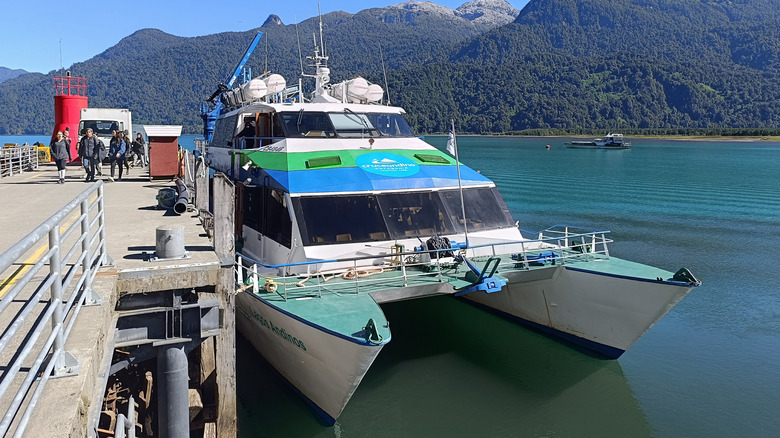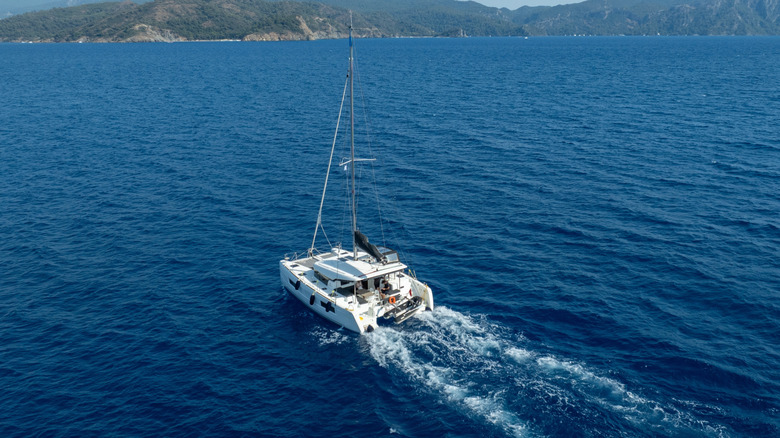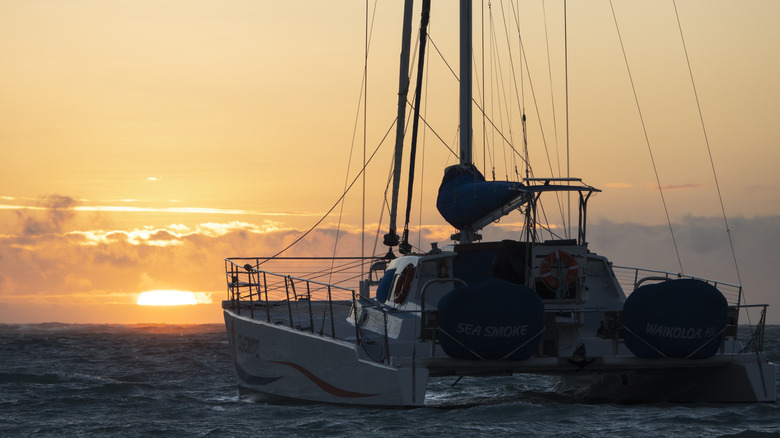What Is A Catamaran & How Does It Differ From Other Ships On The Sea?
There are some nautical questions that can be very difficult for a casual observer to answer. Some aren't, granted: Most of us will be able to tell at a glance whether they're looking at a fishing vessel or a gigantic cruise ship. The question of an ocean liner versus a cruise ship, however, will typically be one that requires a more experienced eye to answer. Identifying a catamaran is also quite a complicated matter.
The interesting thing about the catamaran is that it's generally considered a part of a very common breed of vessel, yet it has a very distinctive feature that sets it apart. A catamaran is a sailing boat with two hulls joined together by one deck.
Armed with that information, you'll know that all catamarans have a huge, glaring difference to most other ships you'll see on the ocean, and one that can be identified at a distance rather than a technical one that those of us who aren't nautically-minded won't be able to distinguish between. It's clear to see that a catamaran does indeed have two distinctive hulls, but another fascinating and slightly more complex factor is why it does.
This unusual arrangement gives the catamaran some notable advantages, making the vessel more stable through its more evenly-balanced design. Even so, it isn't a practical approach for every type of boat, and there are cons to go right along with the pros to this unique design style.
The advantages of the dual-hull design
It has long been evident that two-hulled vessels provide certain advantages. Prabha Shastri Ranade notes in "The Encyclopedia of Tourism and Recreation in Marine Environments" that "catamarans were used by the ancient Tamil Chola dynasty as early as in the fifth century AD for moving their fleet to conquer the South-east Asian region." The concept of today's catamarans, according to Ranade, is derived from such models. In some senses, the advantages they yield over their single-hulled counterparts haven't changed much in the centuries since.
One of the primary factors is that, owing to its side-by-side design, there is often more space on a catamaran than an equivalent vessel of a more conventional design. Two hulls are certainly often better than one when it comes to overall width. As such, they are popular for family vacations. Another boon of the catamaran, and one that will be especially appreciated by those who might feel a little queasy on the water, is that they have a different center of gravity than their single-hulled counterparts.
It's typically lower, and its area is distributed more widely on the water's surface. The movement of a catamaran, then, can be less pronounced, particularly in calmer waters nearer the shore where they're in their element, and they are often easier to control for those who are in command of a catamaran sail vessel. There can also be a lighter weight to a catamaran, relative to the size of its sails. Though most modern ships don't have sails anymore, many catamarans are sailing vessels.
Some potential issues with the catamaran's unique design
With these myriad advantages, it's clear why catamarans are popular. Whether you suffer from the scourge of seasickness, or simply want a more spacious vessel, it can seem as though they tick all the boxes.
The catamaran design, though, while it's utilized by motorized vessels as well as sailing ones, isn't the standard for all vessels. There are reasons why more boats haven't adopted the catamaran design, and some considerable disadvantages to the setup, too.
As great as the onboard space afforded by a catamaran's two hulls can be, it comes with the simple, unavoidable reality that it's typically going to be considerably wider. In more open water, this may not be an issue, but catamarans can be very troublesome to steer through more narrow waterways.
In rougher conditions, a catamaran may not fare so well, as its motions can be more unfamiliar and unpredictable for those on board. Less is displaced by a catamaran's position higher in the water, and this affects the way it navigates in more challenging conditions.
Are two hulls overall better than one? Not necessarily. Two engines, for instance, increase output, but also naturally make running motored catamarans considerably more expensive. They're intriguing vessels that demand something new from even veteran sailors of single-hulled models. A preference — or lack thereof — for them depends on one's experience and what an individual is looking to get out of a journey. The fastest ferry in the world, incidentally, is a catamaran.


